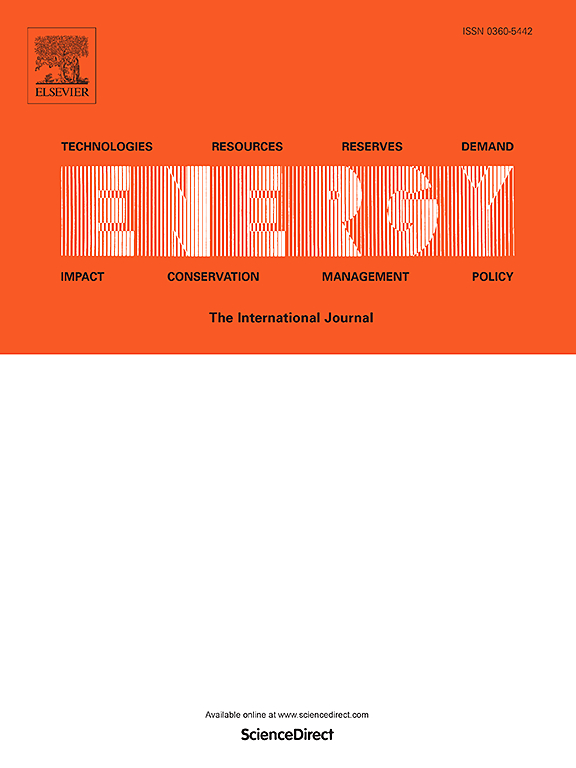Dynamic simulation and predictive control for supercritical water oxidation reactor using reactor network model
IF 9
1区 工程技术
Q1 ENERGY & FUELS
引用次数: 0
Abstract
Supercritical water oxidation (SCWO) reactor is crucial for hydrogen production through autothermal gasification, where hydrogen oxidation provides heat for supercritical water gasification. However, the dynamic behavior and control strategies of industrial-scale SCWO reactors remain insufficiently explored. A computationally efficient reactor network model was developed to address this. Cold start and open-loop dynamic simulations were conducted to investigate the effects of variations in inlet gasification product mass flow rates, gasification product temperature, and oxygen mass flow rate. Results indicate that the fluid temperature stabilizes within 2 min, while the wall temperature takes approximately 1.1 h. Under slow disturbances, the outlet temperature exhibits quasi-static characteristics. The oxygen mass flow rate significantly influences reactor performance, and a dynamic matrix control (DMC) scheme using it as the control variable is designed to regulate the outlet temperature. The oxygen mass flow rate changes from 450.54 kg/h to 392.25 kg/h and 509.59 kg/h with outlet temperatures set at 850 °C and 950 °C, respectively, within 180 s. A comparison of disturbance rejection performance between DMC and PID controllers reveals that DMC responds faster and reduces overshoot, demonstrating superior performance. This study provides insights into the dynamic behavior and operational flexibility of SCWO reactors in engineering applications.

求助全文
约1分钟内获得全文
求助全文
来源期刊

Energy
工程技术-能源与燃料
CiteScore
15.30
自引率
14.40%
发文量
0
审稿时长
14.2 weeks
期刊介绍:
Energy is a multidisciplinary, international journal that publishes research and analysis in the field of energy engineering. Our aim is to become a leading peer-reviewed platform and a trusted source of information for energy-related topics.
The journal covers a range of areas including mechanical engineering, thermal sciences, and energy analysis. We are particularly interested in research on energy modelling, prediction, integrated energy systems, planning, and management.
Additionally, we welcome papers on energy conservation, efficiency, biomass and bioenergy, renewable energy, electricity supply and demand, energy storage, buildings, and economic and policy issues. These topics should align with our broader multidisciplinary focus.
 求助内容:
求助内容: 应助结果提醒方式:
应助结果提醒方式:


